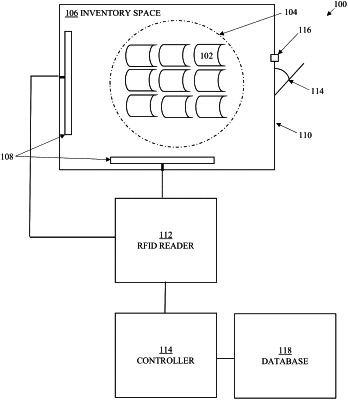| CPC G06Q 10/087 (2013.01) [G06K 7/10009 (2013.01); G06N 7/01 (2023.01); G06N 20/00 (2019.01)] | 7 Claims |

|
1. A method for determining response parameters for a population of RFID tags present in an inventory space comprising:
(a) continuously scanning the inventory space to interrogate the population of RFID tags in the inventory space using an RFID reader;
(b) receiving responses from a plurality of RFID tags within the population of RFID tags using the RFID reader, wherein the responses include responses from a specific RFID tag that are spaced apart by associated response times, which include an elapsed time period between a time at which the RFID reader starts a scan and a time at which the specific RFID tag provides a response, and elapsed time periods between multiple sequential responses from the specific RFID tag as the RFID reader continuously scans the inventory space;
(c) after multiple responses have been received from the specific RFID tag, determining the response times for the specific RFID tag corresponding to sequential ones of the multiple responses;
(d) calculating a maximum acceptable response time for the specific RFID tag based at least in part on the response times determined in step (c); and
(e) recording a response interval data set including one or more of the response times determined in step (c) and the maximum acceptable response time calculated in step (d),
wherein at least steps (c) and (d) are performed periodically to update the maximum acceptable response time as a total number of RFID tags in the population changes.
|